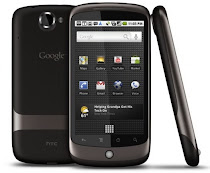Although more people have been using the laptop computers, I'm sure still a few of us knows about the history of Laptop that was started from a Personal Computer which then developed into a portable computers. Nowadays the laptop computers comes with a variety of size and specification, from the thin laptop and a 8 inch size with a weight less than 1 kilogram until the dual screen laptop like being developed by Alaskan-based company gScreen. Before laptop computers (notebook) were technically feasible, similar ideas had been proposed and developed by several companies. Most notably was Alan Kay's Dynabook concept, developed at Xerox PARC in the early 1970s. What was probably the first portable computer was the Xerox NoteTaker, again developed at Xerox PARC, in 1976. However, only ten prototypes were built. The first portable computer that is commercially marketed was Osborne 1, which was developed in 1981. Although Osborne 1 was large and heavy compared to modern laptop computers, with a tiny 5" CRT monitor, it had a near-revolutionary impact on business, as professionals were able to take their computer and data with them for the first time. This and other "luggables" were inspired by what was probably the first portable computer, the Xerox NoteTaker. The Osborne was about the size of a portable sewing machine, and more importantly, could be carried on commercial aircraft. However, it was not possible to run the Osborne on batteries: it had to be plugged into mains. In 1983 the first product from Compaq which is also quite successful, the Compaq Portable. This product is an IBM clone computers, because at that time IBM was the standard platform for all computers. Although scarcely more portable than the Osborne machines, and also requiring AC power to run, it ran MS-DOS and was the first true legal IBM clone (IBM's own later Portable Computer, which arrived in 1984, was notably less IBM PC-compatible than the Compaq). Another significant machine announced in 1981, although first sold widely in 1983, was the Epson HX-20. A simple handheld computer, it featured a full-transit 68-key keyboard, rechargeable nickel-cadmium batteries, a small (120×32-pixel) dot-matrix LCD display with 4 lines of text, 20 characters per line text mode, a 24 column dot matrix printer, a Microsoft BASIC interpreter, and 16 KB of RAM (expandable to 32 KB).





























